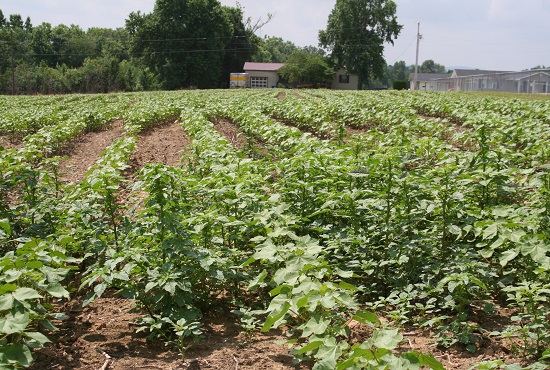Plexus: All Quiet on the Cotton Front – For Now
The market has turned relatively quiet, with daily volume remaining below 16,000 contracts all week. There hasn’t been much fundamental news to digest and from a technical perspective the December contract sits right in the middle of a five-month trading range, with important short- and long-term moving averages converging just above 85 cents. In other words, the market has no momentum whatsoever and it will take some force to jolt it out of this sideways trend.
When we look for potential catalysts to inject new life into the market, the most obvious at this point in the season is weather. At the moment most origins around the globe report decent growing conditions, although West Texas remains an area of concern despite some intermittent rain. We could therefore still see sizeable abandonment, especially if the current heat wave in the Southwest were to continue.
With the US crop being several weeks behind schedule in most areas, the threat of a wet and stormy harvest is going to be greater than normal this season. Long-range models do indeed predict rather unsettled weather this fall, especially after recent volcanic eruptions in the arctic region. In May Mt. Pavlov erupted in Alaska and last month it was Russia’s Mt. Shiveluch that started spewing debris up to 6 miles into the atmosphere. If these eruptions continue, they will cool the polar air mass, which sets up a stormy clash between cold ash-filled polar air and heat streaming in from the Atlantic.
Even without any weather problems we anticipate a rather volatile and potentially explosive transition to new crop. Current crop inventories outside China are very low, the US crop is late and mills still have sizeable holes to fill in the third and forth quarter. The bearish global statistical picture and the rising certified stock may have led to some complacency among mills, not realizing that it could become quite difficult to find cover for September to December shipments. A lot of these slots have already been filled and it may take until January for the cotton pipeline to flow more freely again.
Although the certified stock has been rising rapidly in recent weeks and currently amounts to over 670,000 bales, including bales under review, we believe that it has reached its peak and that it will be downhill from here. Yesterday we saw the first sizeable de-certification of over 25,000 bales and we feel that this is just the beginning. Over the next couple of months most of this certified cotton is probably going to be applied and shipped against existing commitments. This should have a bullish impact on the market, as it will remind buyers that old crop supplies are disappearing fast.
So where do we go from here? As we are entering the summer doldrums it will be difficult for the market to generate enough momentum to escape the current trading range anytime soon. The downside should be limited by the fact that there is no inventory to pressure prices with, while the upside will face resistance from grower hedging in the high-80s. However, given the low availability of cash cotton and the fact that the US crop is late this year, we feel that the odds are slightly in favor of higher prices as we head into late summer and fall. December seems to be a dangerous month to be short and we would therefore advise to use March for short hedges.








